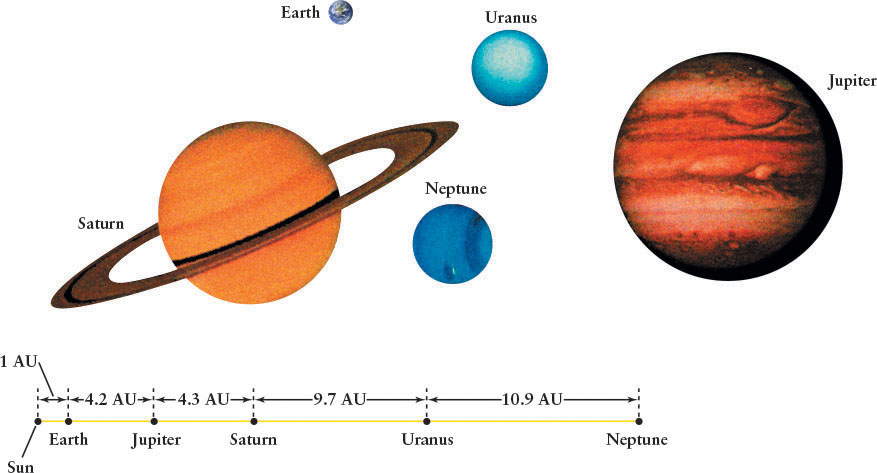Table 8-1
THE OUTER PLANETS: A COMPARISON
| Interior | Surface | Rings | Atmosphere | Magnetic Field* | |
|---|---|---|---|---|---|
| Jupiter | Terrestrial core, liquid metallic hydrogen shell, liquid hydrogen mantle | No solid surface, atmosphere gradually thickens to liquid state, belt and zone structure, hurricane-like features | Yes | Primarily H, He | 19,000 × Earth’s total field; at its cloud layer, 14 × Earth’s surface field |
| Saturn | Similar to Jupiter, with bigger terrestrial core and less metallic hydrogen | No solid surface, less distinct belt and zone structure than Jupiter | Yes | Primarily H, He | 570 × Earth’s total field; at its cloud layer, ⅔ × Earth’s surface field |
| Uranus | Terrestrial core, liquid water shell, liquid hydrogen and helium mantle | No solid surface, weak belt and zone system, hurricane-like features, color from methane absorption of red, orange, yellow | Yes | Primarily H, He, some CH4 | 50 × Earth’s total field; at its cloud layer, 0.73 × Earth’s surface field |
| Neptune | Similar to Uranus | Similar to Uranus | Yes | Primarily H, He, some CH4 | 35 × Earth’s total field; at its cloud layer, 0.4 × Earth’s surface field |
| For detailed numerical comparisons between planets, see Appendix Tables E-1 and E-2. | |||||
| *To see the orientations of these magnetic fields relative to the rotation axes of the planets, see Figure 8-37. | |||||
 | |||||